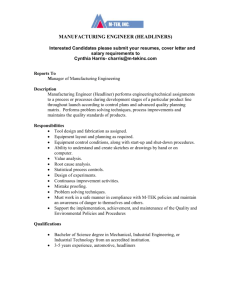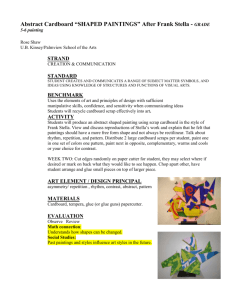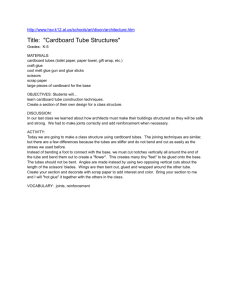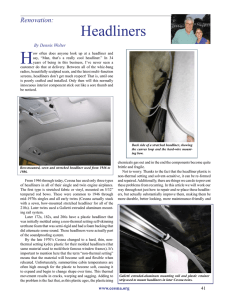Fox Headliner Replacement
advertisement
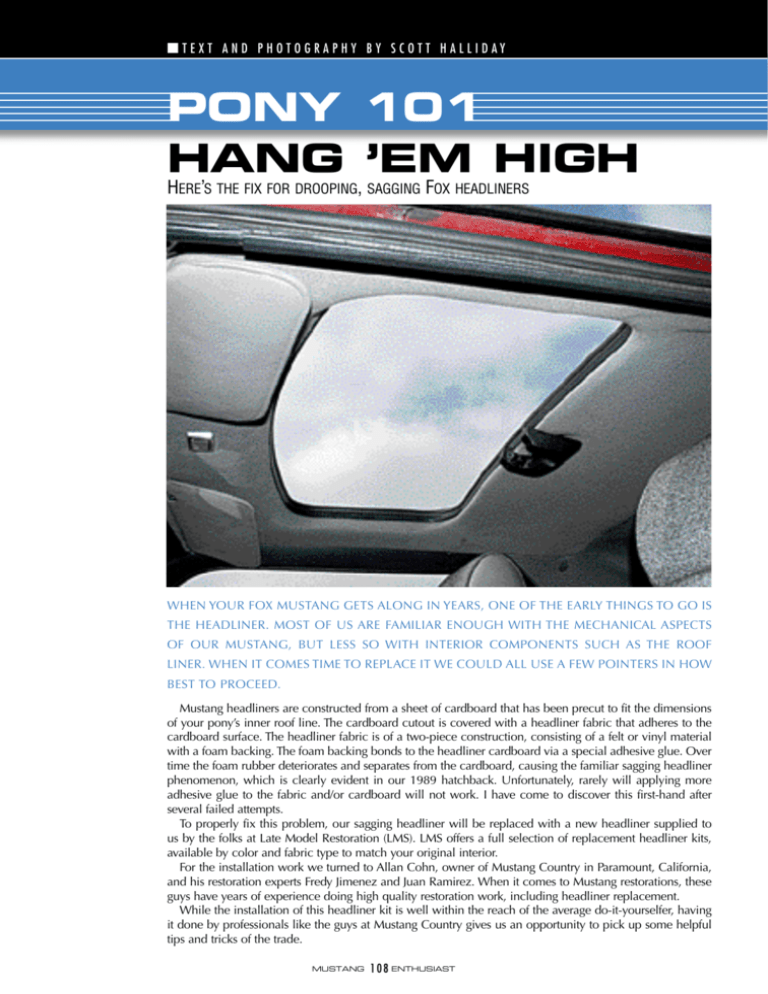
TEXT AND PHOTOGRAPHY BY SCOTT HALLIDAY PONY 101 HANG ’EM HIGH HERE’S THE FIX FOR DROOPING, SAGGING FOX HEADLINERS WHEN YOUR FOX MUSTANG GETS ALONG IN YEARS, ONE OF THE EARLY THINGS TO GO IS THE HEADLINER. MOST OF US ARE FAMILIAR ENOUGH WITH THE MECHANICAL ASPECTS OF OUR MUSTANG, BUT LESS SO WITH INTERIOR COMPONENTS SUCH AS THE ROOF LINER. WHEN IT COMES TIME TO REPLACE IT WE COULD ALL USE A FEW POINTERS IN HOW BEST TO PROCEED. Mustang headliners are constructed from a sheet of cardboard that has been precut to fit the dimensions of your pony’s inner roof line. The cardboard cutout is covered with a headliner fabric that adheres to the cardboard surface. The headliner fabric is of a two-piece construction, consisting of a felt or vinyl material with a foam backing. The foam backing bonds to the headliner cardboard via a special adhesive glue. Over time the foam rubber deteriorates and separates from the cardboard, causing the familiar sagging headliner phenomenon, which is clearly evident in our 1989 hatchback. Unfortunately, rarely will applying more adhesive glue to the fabric and/or cardboard will not work. I have come to discover this first-hand after several failed attempts. To properly fix this problem, our sagging headliner will be replaced with a new headliner supplied to us by the folks at Late Model Restoration (LMS). LMS offers a full selection of replacement headliner kits, available by color and fabric type to match your original interior. For the installation work we turned to Allan Cohn, owner of Mustang Country in Paramount, California, and his restoration experts Fredy Jimenez and Juan Ramirez. When it comes to Mustang restorations, these guys have years of experience doing high quality restoration work, including headliner replacement. While the installation of this headliner kit is well within the reach of the average do-it-yourselfer, having it done by professionals like the guys at Mustang Country gives us an opportunity to pick up some helpful tips and tricks of the trade. MUSTANG 1 0 8 ENTHUSIAST 1 4 2 3 5 6 7 8 1. To do the job right, here are the tools you’ll need… scraper, wire brush, Phillips and flathead screwdrivers, ratchet with short extension, T-50 bit driver, 11mm socket or wrench, interior door panel remover tool or putty knife, scissors or cutting knife. 2. Since our 1989 Mustang is equipped with a factory sunroof, we begin the headliner replacement by removing the sunroof and sunroof weatherstripping from the vehicle. Once the sunroof has been removed, the weatherstripping is easily pulled from the sunroof’s outer frame. 3. Next, remove the sunroof latch mechanism. Use a Phillips screwdriver to remove the screw from the plastic cover, then an 11 mm socket or wrench to remove the two nuts that secure it in place. 4. Remove the sun visors using a Phillips screwdriver. If your Mustang is equipped with lighted vanity mirrors, you will also have to disconnect the power plug from the visor. 5. To remove the upper seat belt mount, gently pop off the plastic cover and use a T-50 bit driver to remove the mounting screw. 6. Remove the interior moldings that secure the headliner to the ceiling. These include the front windshield, rear hatch and the two moldings over the door. Start with the two door side moldings. These moldings are attached on the back using spring clips that are similar to door panel clips. To remove, insert the door panel remover tool between the side molding and roof frame. 7. Gently pry each clip until it pops loose from its hole in the roof frame. We used a specially designed interior door panel remover tool, but the same job can be done using a putty knife. Next, remove the front windshield molding and use a Phillips screwdriver to remove the screws securing the rear molding in place. 8. While the rear inner trim quarter panels do not need to be removed, the screws in the upper part of the panels do. This is necessary in order to loosen it enough to allow for the headliner removal. Use a Phillips screwdriver to remove the screws used to fasten each quarter-panel molding. MUSTANG 109 ENTHUSIAST 9. Disconnect the dome light plug by working the headliner loose from the two rear inner quarter panels and lowering it enough to access to the top side. Use a flathead screwdriver to gently separate the two clips from the plug and pull it apart. 10. Now remove the headliner from the car. This is most easily accomplished by two people, but with a little patience and care one person can manage it. 11. With the headliner removed, place it top side up on a well-lit flat work surface. Peel back the old headliner fabric from the cardboard, taking care to remove both the fabric and its rubber backing. Thoroughly clean the surface in preparation for the new material. Use a wire brush to scrape and remove any remnant of the rubber backing and adhesive glue. Do not use any type of solvent, and wipe down with a clean dry rag. It is important that all of the old glue be completely removed from the cardboard surface before starting to apply the new liner. 9 10 11 12 12. Take special care when removing the dome light, and be sure to mark its original position on the cardboard. This will ensure it can be reinstalled in the correct position. 13. Once the surface has been properly cleaned, position the new headliner fabric over the cardboard. It is best to glue one half at a time. First, peel back the fabric halfway, and then apply adhesive glue to both the cardboard and fabric. In our case, a special spray gun was used that was specifically set up for this job. For do-it-yourselfers, the same results can be achieved by using a 24-ounce can of 3M adhesive spray (PN 080088). 13 14 14. Be careful to apply the glue evenly to both the cardboard backing and the headliner fabric surfaces. It is important to avoid touching the glue once it has been applied, otherwise the fabric will not adhere properly and bumps may appear in the new headliner. 15. Starting in the middle and working towards the far end, evenly press the new liner onto the cardboard. The glue has a drying time of between three to five minutes, so it is also important to apply the headliner fabric to the cardboard within that timeframe. 16. With the new fabric adhered to the cardboard, the next step is to cut it to shape. Use a sharp pair of scissors or a knife to cut away excess material, including the sunroof and sun visor holes. With the sunroof opening, be sure to leave enough excess material to wrap over the sunroof’s weatherstripping rail (see captions 24-27). 15 16 17. Use an awl or other sharp pointed tool to punch holes for the sun visor screws. This will ease the reinstallation by clearly marking the correct placement for each screw. Last but not least, remember to reinstall the dome light. Our newly covered headliner panel is now ready for installation. 18. To position the headliner properly positioned, work it into position above the two rear inner trim quarterpanels. This is much easier accomplished with two people since one can steady the front while the other works the rear of the headliner into position. 17 18 19 20 21 22 19. Do not forget to reconnect the dome light before reinstalling either the front or the two side door moldings. 20. When reinstalling the rear molding, use an awl or other sharp pointed tool to punch through the fabric and locate the exact position for each of the screw holes. 21. Where needed, use a shape-cutting knife to enlarge the hole within the headliner fabric for each sun visor. 22. Use an awl to easily locate the screw holes for each sun visor. MUSTANG 1 1 2 ENTHUSIAST 23. Using the T-50 bit driver and Phillips screwdriver, reconnect the seatbelt upper mount and plastic cover. 24. With the headliner properly positioned, the next step is to adhere the headliner fabric to the sunroof’s weatherstripping rail. Start by applying adhesive glue to both the fabric and weatherstripping rail. 23 25. Next, use a knife or scissors to make side cuts into the fabric so it can be rolled over the weatherstripping lip. 24 26. Roll the material over the weatherstripping rail, pressing firmly to ensure the fabric has completely adhered to the rail. 27. Use a knife or scissors to trim away excess material around the bottom of the weatherstripping rail before reinstalling the sunroof weatherstripping. 25 28. With the new headliner installation complete, it is easy to see what an awesome improvement it makes to the interior of this Mustang. 26 SOURCES Latemodel Restoration Supply (866) 507-3786 www.50resto.com 27 Mustang Country International 14833 Lakewood Blvd. Paramount, CA 90723 (562) 633-2393 www.mustangcountryintl.com 28 MUSTANG 113 ENTHUSIAST
